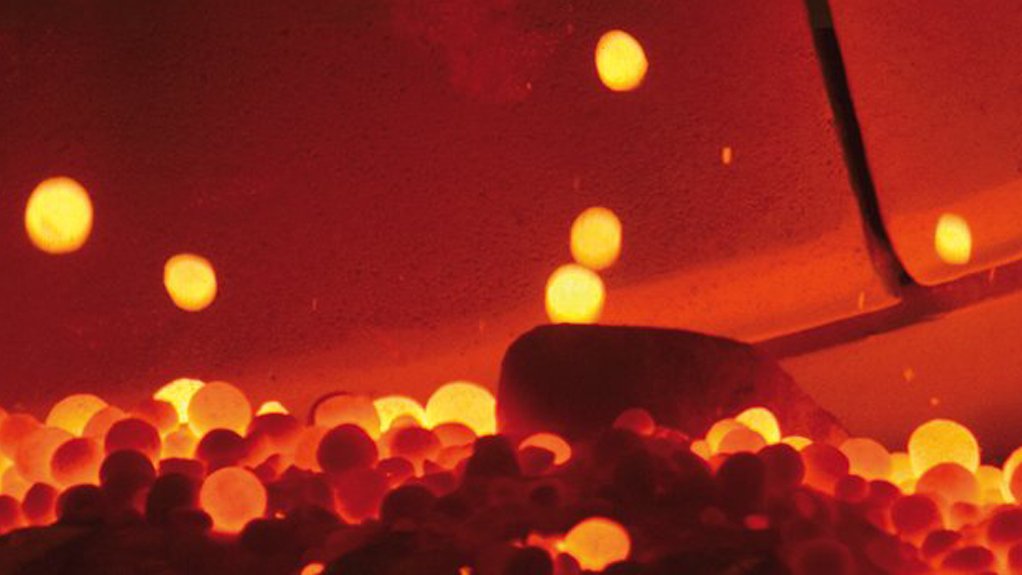JOHANNESBURG (miningweekly.com) – Operations at the Lion ferrochrome smelter and Eastern Chrome mines of the Glencore Merafe Chrome Venture have recommenced, but the Boshoek, Rustenburg, Wonderkop, Lydenburg smelters and Kroondal mine will remain on care and maintenance until the macroeconomic environment improves, Merafe Resources said on Friday.
Coinciding with the start of South Africa's five-week lockdown to curb the spread of Covid-19 on March 24, all production was stopped at the venture, in which the JSE-listed Merafe has a 20.5% participation and diversified mining and marketing company Glencore 79.5%.
Now, in addition to Lion and Eastern Chrome, the venture’s upper group two (UG2) plants would also restart in a phased manner once platinum mines resumed operation, Merafe stated in a media release to Mining Weekly.
The Glencore Merafe Chrome Venture had, Merafe stated, implemented stringent Covid-19 restrictions, with return-to-work processes including screening, testing and physical distancing at each operation, in line with the South African government’s Covid-19 regulations.
The decision to continue to idle the venture’s Boshoek, Rustenburg, Wonderkop, Lydenburg smelters and Kroondal mine had been taken against the background of the macroeconomic environment being challenging even before the impact of Covid-19, the company said.
The venture would continue to support its employees and community projects, stated Merafe, which is headed by CEO Zanele Matlala.
Positive for the ferrochrome business is last month’s settling of the European benchmark ferrochrome price at $1.14/lb, a level 12.9% higher than the benchmark price in the first three months of this year.
Mining Weekly can report that China imported approximately 79% of its chrome ore in 2019, from South Africa, compared with 76% in 2018, with 99% of the ferrochrome produced being used in stainless steel and specialty steels.
Stainless steel production grew from 51.4-million tonnes in 2018 to 51.9-million tonnes in 2019.
Approximately 3.6-million tonnes of the world's ferrochrome production of 14-million tonnes was supplied by South Africa in 2019, Merafe states on its website, where it adds that more than 72% of the world's chrome reserves are in South Africa.
The South African chrome industry provides approximately 200 000 direct and indirect jobs.
The Lion smelter uses 37% less electricity than conventional ferrochrome processes to produce the equivalent volume of ferrochrome.
In addition, the smelter needs far less coke than conventional smelters as well as using significant amounts of locally produced, lower cost anthracite and char.
Mining Weekly can report that had the Lion operation not installed Premus technology, it would have needed an additional 1 776 MWh to produce the same volume of ferrochrome. Instead, all four furnaces collectively utilise some 4 800 MWh a day.
The efficient use of energy, significantly enhanced through pelletising to cope with increasing volumes of fine chrome ore, and the use of more cost-effective UG2 chromite ore recovered from platinum tailings, have been key sources of competitive advantage that place both phases of Lion – known as Lion I and Lion II – in a cost-leadership position.
Friable, metallurgical grade chrome ore is pelletised to produce the ferrochrome. The pelletised material is put through prereduction kilns, which radically reduce furnace time and thus electricity consumption.
Lion II doubled the 360 000 t capacity of Lion I to give the Lion smelter a combined capacity of 720 000 t of ferrochrome a year. Lion II was built at a capital cost of R4.9-billion, capital which included the development of the Magareng chrome mine.
The venture owns and operates a number of chromite mines and 22 ferrochrome furnaces with a combined installed capacity of 2.34 million tons of ferrochrome a year.
Glencore stated in its quarterly report for the three months to March 31 that attributable ferrochrome production of 388 000 t was 14 000 t, 3%, lower than the first quarter of 2019.
EMAIL THIS ARTICLE SAVE THIS ARTICLE ARTICLE ENQUIRY
To subscribe email subscriptions@creamermedia.co.za or click here
To advertise email advertising@creamermedia.co.za or click here











